CERN As The Root Of Modern Science
The European Organization for Nuclear Research, or CERN, has been one of the most important facilities in the world for the study of subatomic particles and fundamental physics.
This is important work, as quantum physics and relativity have been the fundamental sciences behind many, if not most, of the modern worlds technological innovations, including computers, cell phones, lasers, telecommunications, satellites, MRI, solar panels, advanced microscopes, nuclear energy, etc.
This is because all of these technologies require a deep understanding of the behavior of atoms, electrons, and other particles at the smallest scale. And those are all but intuitive, going far beyond the simplified model of electrons orbiting the atom’s nucleus. For example, even the simplest possible atom, hydrogen, requires a complex equation to describe how its electrons truly behave.
Source: Department of Energy
The CERN has also been a truly global and international scientific initiative from which many other discoveries, including the Internet itself, have sprung.
Lastly, the building, operating, and upgrading of the CERN facilities have been a major driver in boosting research and engineering in many advanced scientific fields like superconductors, sensors, and ultra-powerful lasers and magnets.
Ambitious Science From Day One
CERN was founded in 1954 by 12 European countries, with the French language acronym “Conseil Européen pour la Recherche Nucléaire” giving it its name.

Source: Wikipedia
It would not be an exaggeration to say that a large part of modern particle physics was born in CERN, notably:
- The discovery of the weak bosons carrying one of the 4 fundamental forces, was awarded the 1984 Physics Nobel Prize.
- The first creation of antihydrogen atoms.
- The discovery of a new state of matter, quark-gluon plasma.
- Nobel Prize in Physics of 1992 to a CERN researcher for his invention and development of particle detectors.
- Nobel Prize in Physics of 2013 to CERN researchers for the description and observation of the Higgs bosons (responsible for giving particles their mass).
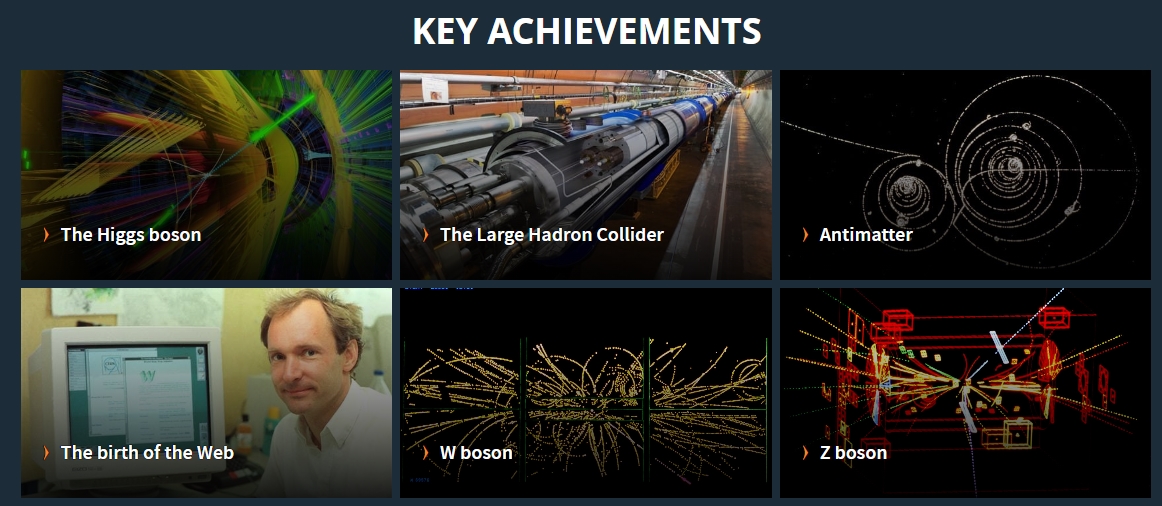
Source: CERN
Today, the CERN involves 25 countries as full-fledged members and 10 associate members, which is the first step before potential full membership. To these should also be added the close relation with 3 countries with observer status (Japan, Russia, USA) and collaboration or scientific contact with almost every country on Earth.
CERN directly employs 3,500 people, the largest group being made of scientists and engineers, followed by technicians, following the lead and insights a little below a hundred research physicists.
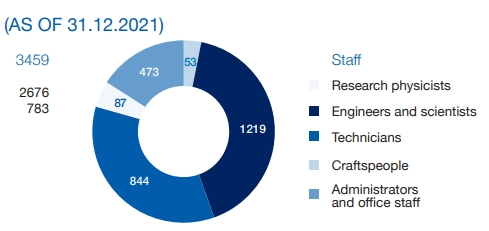
Source: CERN
CERN Infrastructures
None of the CERN’s achievements would have been possible without the world-class engineering that went into building its particle accelerator and detectors.
Particle accelerators work by moving particles in a strong vacuum, free of any air or dust. Powerful electromagnets and electric fields accelerate the particles and keep them confined in the accelerator. The accelerated particle, sometimes at 99.9% of the speed of light (299 792 458 meters per second / 186,000 miles per second), hits either another particle beam or a fixed target.
The extreme speed and energy in these collisions allow scientists to understand more about the fundamental nature of these particles.
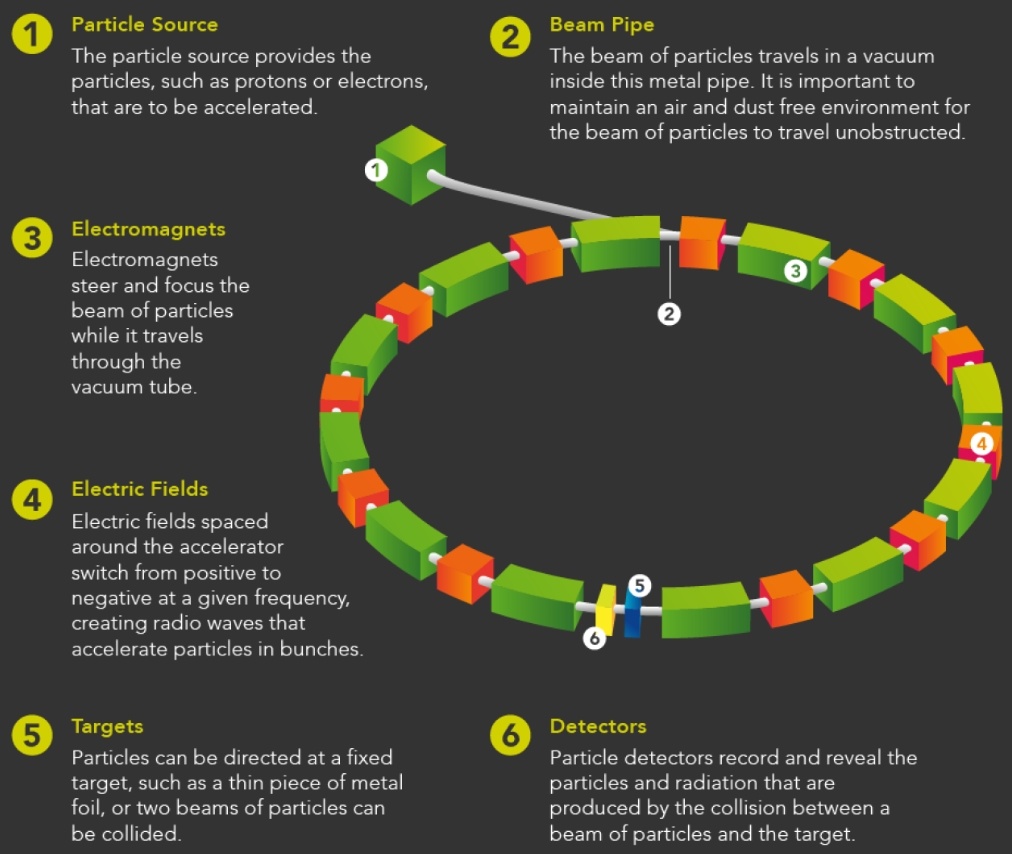
Source: Department of Energy
Today, CERN’s main particle accelerator is the LHC (Large Hadron Collider), located in Geneva, Switzerland. The LHC is an underground tunnel as deep as 175 meters (575 feet), forming a circle 27 kilometers (17 miles) in circumference.
In the future, it might be dwarfed by an even larger 90-100km accelerator going under Geneva Lake and all around the city (more on that below).
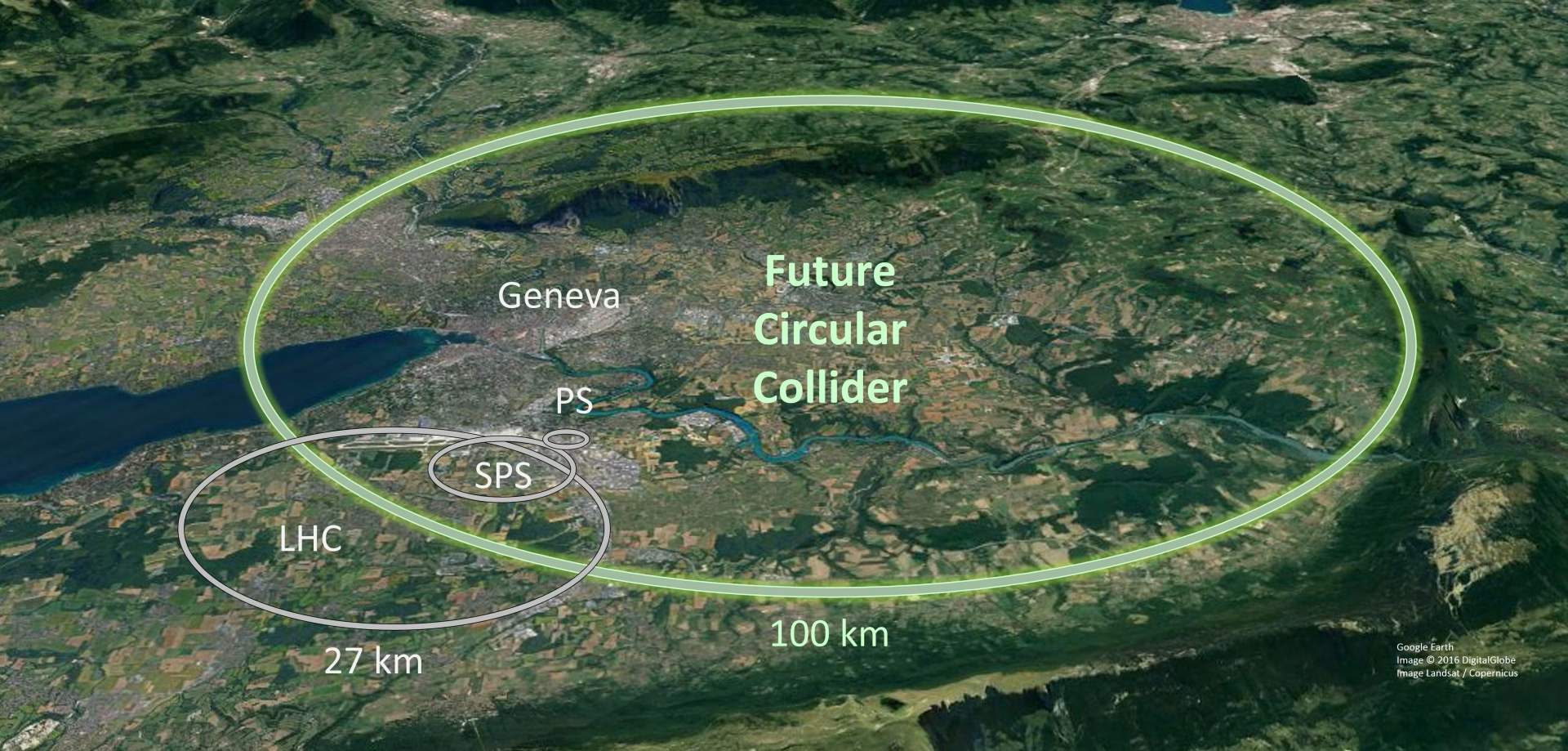
Source: Swisstopo
Today, on top of the “main” LHC, the CERN operates 11 other particle accelerators for specific research needs on heavier particles, protons, plasma, study of unstable nuclei, etc. These particle accelerators often complement one another, with many “feeding” the required particles into the others in a complex interlocking system.
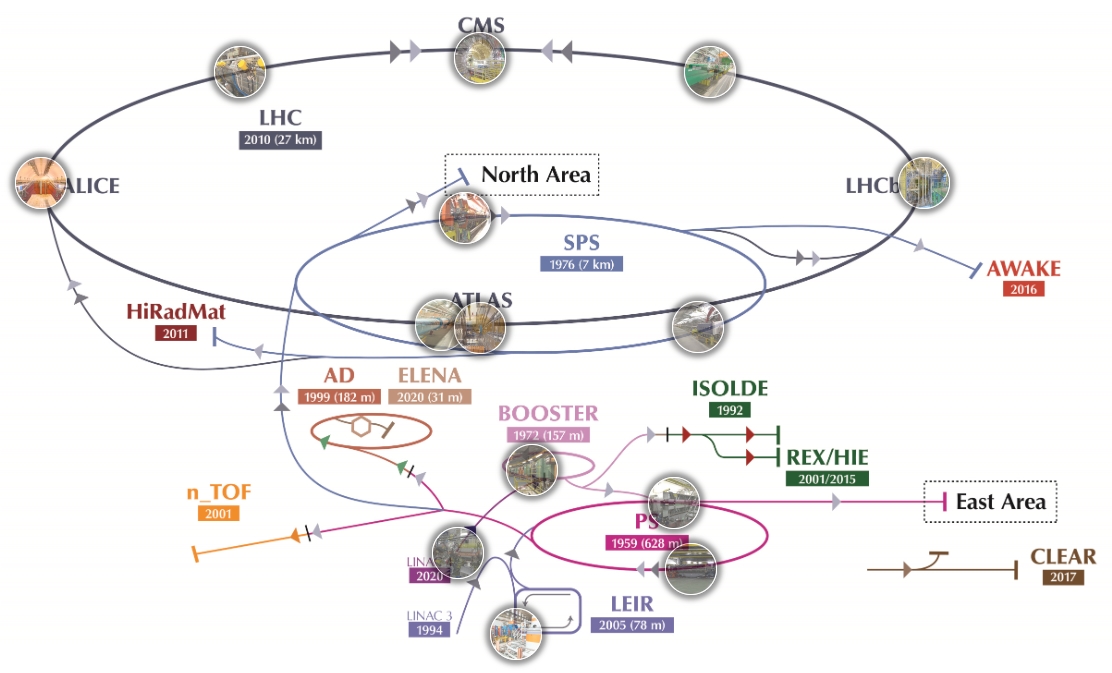
Source: CERN
The institution also has no less than 11 decommissioned particle accelerators and colliders built since the 1950s.
CERN Technology
LHC
The LHC’s deep underground location resulted from a mix of scientific and financial reasons. It is cheaper to dig a tunnel than acquire a circle of 27km diameter of surface land, especially in the expensive Geneva region. The layers of rocks also shield the facility from cosmic and surface radiation.
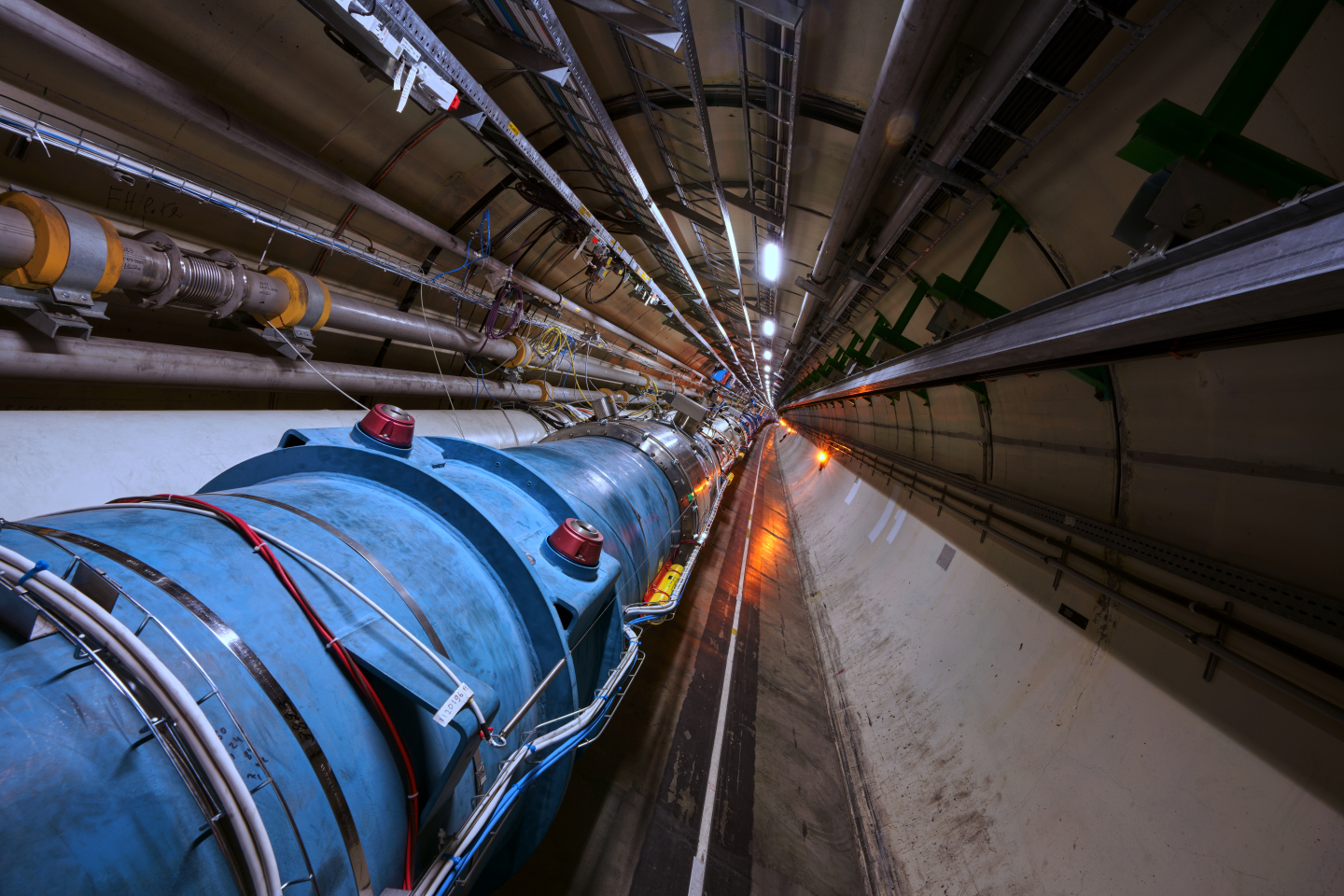
Source: CERN
The LHC is the strongest particle accelerator ever built. It consumes, on average, 600 GWH per year, around half of the total CERN’s energy consumption of 1.3 TWh. To put it into perspective, the whole of France consumes 500 TWh, the EU 3400 TWh, and the world 20,000 TWh.
The LHC makes 2 particle beams, each traveling close to the speed of light, collide with each other. They are guided and confined by 9593 superconduction electromagnets cooled by liquid helium at -271.3°C (-456.34°F).
Most of the energy consumption of the operation is due to the electromagnets, both to operate them and the energy expanse to produce this massive amount of liquid helium.
LHC Goals
The LHC performed its first collision in 2008 and is expected to run up to the 2040s. After a first run including the discovery of the Higgs boson, it is ongoing a massive upgrade and maintenance work to prepare for the second run, which will boost the LHC’s power levels to 13 TeV (tera electronvolts) collisions.
After the Higgs boson discovery, the LHC is expected to help answer fundamental questions about the Universe, including the role and nature of the so-called dark energy and dark matter.
The extreme energy levels reached should also give us insights into the early stage of the Universe, in a state of “quark-gluon plasma”.
ATLAS
A key complement to the LHS is the ATLAS particle detector. It is the largest particle detector ever built, at 46 meters (150 feet) long and 25 meters (82 feet) in diameter.
The detectors contain 100+ million sensitive electronic channels to record the particles produced by the collisions.
It contains many sub-detectors, each playing a separate role, to detect at the same time photons, electrons, muons, pions, etc.

Source: ATLAS
5900+ physicists, engineers, technicians, students, and administrators have worked in building and operating ATLAS, representing 180 scientific institutions from 40+ countries.
CERN – Technologies Born
All of these kilometers of particle accelerators have yielded a lot of useful technology to mankind over time.
Inventing The Internet
Maybe the most impactful technology to ever come out of CERN was the Internet; really.
CERN created the TCP/IP protocol for its own internal network, and the concept of the World Wide Web was invented at CERN by Tim Berners-Lee, who made the very first website (follow the link to see how it looked).
It was initially thought of as a way for researchers to exchange data and ideas more easily.
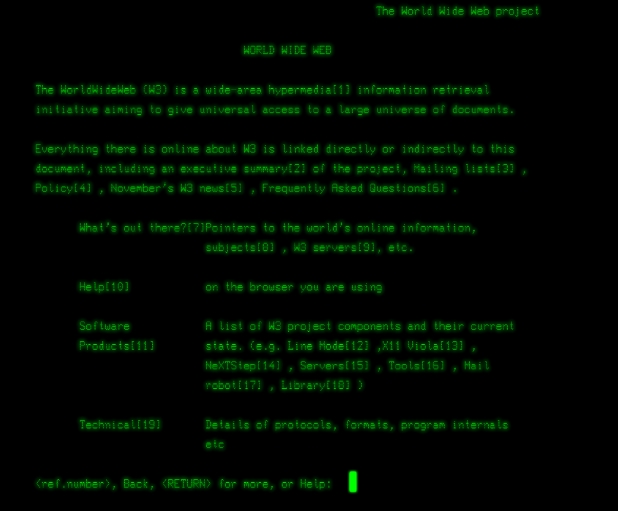
Source: CERN
In 1993, CERN offered the World Wide Web software to the world as a public domain intellectual property. It would also be a pioneer in grid computing, the process of performing a calculation through multiple computers connected by the web.
So maybe paradoxically, one of the greatest contributions of CERN, a particle accelerator research organization, was to boost the free exchange of all knowledge, data, and software, instead of a quantum physics experiment.
Medical Applications
One application of CERN’s research is a deeper understanding of particle accelerators. Smaller-size accelerators are now routinely used in hospitals for radiotherapy in cancer treatments. Continuous research has made them increasingly efficient, smaller, and cheaper over time.
An additional contribution to cancer therapy is in the field of nuclear medicine, or using rare isotopes to kill cancer cells.
Since 2017, the CERN-MEDICIS infrastructure has been producing innovative radioisotopes specifically for medical applications and providing them to medical doctors and researchers who can assess their suitability for advanced treatments and imaging.
Some of these radioisotopes are uniquely produced at CERN.
Medical imaging is another field where particle physics is crucial, from X-rays to MRI, PET scans, and computed tomography (CT).
Several improvements in hadron radiotherapy, as well as medical imaging, directly came from the sensors developed for the ATLAS particle detector.
During the Covid pandemic, CERN developed an open-source tool (COVID Airborne Risk Assessment tool – CARA) to model virus concentration in enclosed spaces with varying parameters, such as room size, time spent in the room, mask-wearing, number of people, and ventilation.
Energy & Green Tech
CERN has been collaborating with Airbus by bringing its expertise to superconducting cables for potentially lighter airplanes, or even electric airplanes.
The institution’s experience with testing material at extremely low temperatures is also useful for testing the potential of hydrogen in airplane transportation.
CERN is also collaborating tightly with ITER, the world’s largest nuclear fusion project, which could offer an unlimited supply of clean energy if it succeeds. Considering nuclear fusion mostly relies on ultra-powerful magnets and superconductor materials, the overlap with CERN’s expertise is obvious.
Data processing
When particles are detected, the flux of data generated in microseconds is enormous. More problematic, these 40 terabytes per second cannot possibly be stored for later processing.
This has led the CERN scientists to become experts at designing algorithms able to decide which of the data are of the most interest data on the fly.
CERN is collaborating with companies like CEVA (sensors) or ABB Motors to use such algorithms to optimize the energy consumption of CERN’s facilities and equipment in development.
This is also used by the car safety company Zenseact to develop low-latency autonomous driving systems.
The same principles are being deployed to drones and robotics systems in general, notably with the company Terabee.
Aerospace
CERN has a long-standing experience in dealing with intense and sometimes exotic forms of radiation produced by its equipment and experiments.
This can be leveraged in practical applications for radiation shielding of satellites and manned experiments in space, often in collaboration with the European Space Agency (ESA).
For example, CERN has the only installation on Earth capable of replicating Jupiter’s harsh radiative environment.
Others Applications
CERN’s requirements to have all of its particle detectors and systems in perfect synchronization down to the nanosecond has made it an expert in this field as well.
The open-source “CERN-born time-synchronisation” standards can be used in telecom, financial markets, and quantum networks. For example, trading provider Deutsche Börse is using it in their trading system infrastructure.
Education
CERN is also acting as an educational resource for advanced sciences and physics.
This includes providing for free a 3D-printable model of its equipment, explanatory cartoons and comic books, and classroom materials for teachers.
In parallel, it provides for free its own flexible, high-performance, open-source digital library framework, today used by libraries, universities, and global institutions.
CERN maintains the world’s largest general-purpose research repository, based on the same digital library framework. This easy-to-use repository enables scientists from any field to preserve and share their research outputs.
The dedication of CERN to sharing knowledge also manifests in its spin-off Orvium, a publishing infrastructure for open-source and decentralized scientific publications.
Finally, CERN provides educational tours of the facilities, a local museum, and art exhibitions.
CERN Future Infrastructures & Achievements
High Luminosity LHC (HL–LHC)
While the CERN researchers and technicians are working hard to get as much as possible from the current installations, they are at the same time looking to the next steps.
The first one will be the “High Luminosity LHC”, or HL–LHC, an upgrade intending to boost the luminosity of the LHC by 10x. For example, the High-Luminosity LHC will produce at least 15 million Higgs bosons per year, compared to around three million from the LHC in 2017.

Source: CERN
The upgrade will include improvements in magnets, superconductor links, reinforced protection, and better accelerators.
HL–LHC should be operational in the mid-2030s, as the civil engineering work started in April 2018, and received its first magnets in December 2024.
Future Circular Collider (FCC)
After the LHC, a gigantic 90km design is expected to be the next step of particle accelerators, called the Future Circular Collider (FFC). It will be built at an average depth of 200 meters (656 feet).
The first experiments will go on for 15 years, starting in the mid-2040s with the FCC-ee, an electron-positron collider. FCC-ee’s power consumption is expected to vary between 1 and 1.8 TWh/year.
A second machine, the FCC-hh, a proton-proton collider, would be installed in the same tunnel and start in the 2070s and run for more than 25 years.
The whole project is expected to cost around CHF15B, spread over 15 years. Final completion of the feasibility study is expected for 2025, with a final decision by the CERN committee by 2027-2028 and construction starting in the 2030s.
The FCC could investigate particles predicted by theories going beyond the standard model of particle physics, which would require either more sensitive detectors or more powerful acceleration.
This deeper understanding of physics will likely be crucial to improving the performance of computers and opening new possibilities for material sciences. And by doing so, allowing mankind to become a truly advanced civilization able to navigate the stars, create true artificial intelligence, or enjoy unlimited abundant energy.
CERN Related Company
CEVA
CEVA is a sensor company and a partner with CERN to use the institution algorithm to improve its sensors’ efficiency and power consumption. CEVA solutions and IP (200 patents) are integrated into 18 billion devices.
The company solutions are used by many of the leading electronic brands all over the world.

Source: CEVA
The main application of the collaboration between CEVA & the CERN is “Edge AI”, or artificial intelligence applications deployed on devices away from the data centers (the cloud) and closer to the consumers (the edge).
It may not be surprising to see particle physics algorithms being reused in AI applications, as neural networks were, for example, used in finding the Higgs boson particle. Analyzing particle accelerator data needs to be done on-site instead of in the cloud, due to the sheer volume of data produced very quickly.
Ceva helped CERN create new compression algorithms that can be used in future experiments and will be able to integrate this new technology into its products.
“Thanks to our collaboration with CERN we were able to develop an innovative approach that enables the networks to run up to 15x faster compared to 16-bit baseline models.
It’s enhancing network speed and reducing energy consumption by up to 90% while maintaining comparable accuracy.”
Olya Sirkin – Senior Deep Learning Researcher at Ceva
This is but one of CEVA’s technological progress, with the company active in wireless connectivity, sensors (vision, audio, motion), and neural network algorithms.

Source: CEVA
CEVA greatly benefits from the combined trend of 5G connectivity (including satellite 5G) and IoT (Internet of Things) with embedded AI solutions, both for industrial and home solutions. It is also a leader in WiFi 6 solutions and has a leading position in WiFi 7.
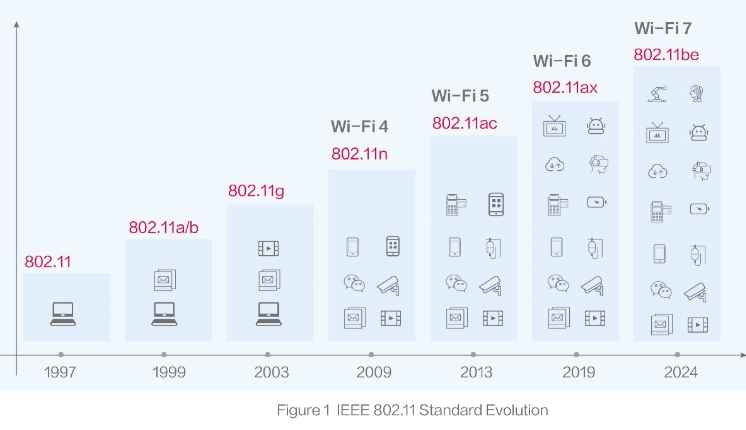
Source: Ruije
As a software and IP company, CEVA is well-known and is often missed by investors interested in the IoT and 5G sectors.
It can be an interesting company at the very edge of technological progress in data processing and edge AI, as illustrated by CERN’s selection of it to help with some of the most complex data analyses ever performed by mankind.
